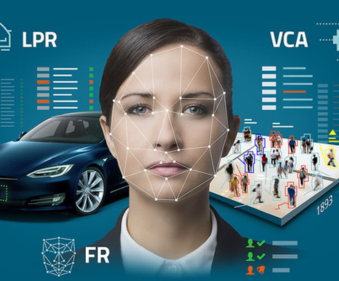
AI-based video analytics is one of the technologies driving innovation in a variety of sectors around the world today. It is creating new revenue streams across many industries in Singapore by combining the deep learning capabilities of artificial intelligence (AI) with computer vision (CV) algorithms. AI-based video analytics is the process of deriving meaningful insights and conclusions from digital video data. It is also known as Video Content Analysis, Video AI or Intelligent Video. This procedure alleviates the burden of time-consuming and repetitive human video observation tasks. With the use of video footage, artificial intelligence (AI) can be taught to detect, identify, categorise, and tag specific items in addition to monitoring data. It is a technology that helps people understand video information and make automated decisions based on data observations.
Before looking into the industrial applications of video AI, let us explore the workings of an artificial intelligence-based video analytics system.
Deep Learning and Video Analytics
Deep learning is a subfield of machine learning that employs neural networks to learn data patterns. It replicates the non-linear information processing in human brains, and the neural networks are made up of many layers of interconnected processing nodes. Deep learning can automatically learn and extract features from raw data, eliminating the need for manual feature engineering.
The rapid advancements of deep learning have showcased significant success in applying AI to video analysis. Their algorithms, in particular, are used to detect and track objects in videos, as well as to identify specific actions.
1. Object Detection
One of the most common uses of deep learning for video analysis is object detection and tracking. This entails detecting a specific object in a video stream and tracking it. Using a convolutional neural network (CNN) is a popular technique to extract complicated patterns from data.
2. Action Recognition
Recognising specific actions in a video sequence or real-time video feed is another common application of deep learning for video analysis. Deep learning models can be developed to classify activities performed in a variety of contexts or environments. Video motion detection analysis is well-known for identifying activities in a scene by analysing a sequence of video frames.
AI-Based Video Analytics Systems
While AI-based video analytics systems can be configured in a variety of ways, the general process remains the same. Images captured by cameras and sensors are processed by a series of algorithms that train the system to find and recognise specific items or events. After identifying these elements or occurrences, the system classifies them and determines the next task to be performed.
Along with object detection, recognition and tracking, some of the other common techniques in AI-based video analytics systems include facial detection and identification. While the two terms are sometimes used interchangeably, there is a clear difference between them. Both use object detection frameworks to classify and locate items in a visual field; however, facial recognition identifies a person based on the features discovered, whilst facial detection only finds them. While the distinction may appear to be abstract, the application of each varies significantly. For instance, Singapore retail enterprises that wish to measure traffic flow may only need facial detection. In contrast, security applications that seek to identify intruders would require facial recognition systems in Singapore.
Similar to these scenarios, AI-based video analytics have a wide range of industrial applications in Singapore. Here are some of the leading sectors where video AI is thriving.
Industries Utilising Video AI Applications
1. Security
AI-based video analytics are being used to facilitate security surveillance by developing a general means of detecting and identifying diverse objects in video feeds. Such technology can be used to monitor persons or objects of interest in videos. When video analytics is utilised for these purposes, it enables the flagging of specific entities and alerts can be generated in response to suspicious activity.
AI Video Object Classification
The goal of video feed object classification is to detect harmful items, such as weapons, in a live camera feed or given footage. Some minor variations in objects can be difficult for security officers to recognise. They can, however, be identified by video analytics programs trained to detect minute variations between items in order to discern between hazardous and safe objects.
2. Retail
The retail industry can utilise AI analytics for video streams in a variety of situations. They help to improve operations and provide better customer experiences by analysing certain retail management components without increasing human responsibility or introducing more operational costs.
Intelligent Queue Management
Video analytics can provide information on optimising checkout procedures and potentially setting up stores for check-out-free possibilities. It enables stores to carry out self-checkout and code-enforcement activities without worrying about violations and malicious activities. Queue management can also provide insights into what tactics work and what does not when it comes to managing the number of lineups in retailers.
3. Health
As healthcare in Singapore is regulated by strong government and corporate legislation, institutions have long prioritised cutting-edge technology to minimise costs and ensure the safety of their processes. Implementing video analytics in healthcare can help with the monitoring of elderly or young patients in hospitals.
Explore Video Analytics Powered by Artificial Intelligence with SPIRALTECH
If you are on the lookout for a video analytics platform that provides valuable insights with the support of artificial intelligence, then SPIRALTECH is here to assist you. As a full-service IP video solution provider with over two decades of industry experience, we offer numerous products to our clientele, ranging from hemispheric cameras (360 cameras) to facial recognition systems in Singapore. We also handle everything from installation to maintenance when it comes to our IP video solutions.
The BRIEFCAM Video Analytics Platform is one of our solutions that focuses on transforming video into actionable intelligence. It delivers accurate, adaptive, and comprehensive solutions that help to speed up investigations, improve situational awareness, and enhance operational intelligence. If you want to learn more about the BRIEFCAM Video Analytics platform, do not hesitate to reach us at +65 64441836.


